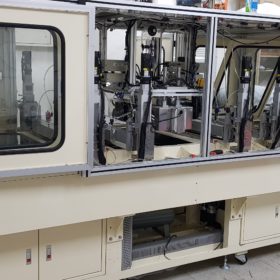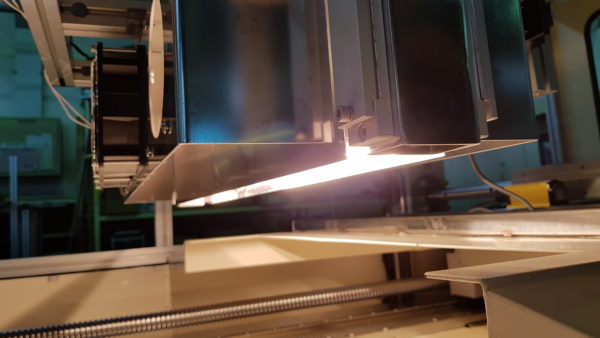New production equipment for large-area perovskite solar cells

National Taiwan University and Taiwanese PV production equipment provider E-Sun Precision Industrial Co. have developed equipment to produce different kinds of perovskite cells with varying chemical compositions. The first trials achieved 14.3% conversion efficiency rates.
The New Energy Center at National Taiwan University and Taiwanese PV production equipment provider E-Sun Precision Industrial Co. have developed new production equipment to manufacture p-i-n type perovskite solar cells with large area.
Researchers from both entities said the machine can facilitate the production of “low-cost” perovskite cells through the MK-20 once-through process. The manufacturing process, which is based on slot-die coater and fast thermal processor (FTP) tech, is fully automatic and can currently handle small-quantity sample production.
“This machine can continuously carry out four layers thin-film coating and fast heat treatment in sintering and crystallization,” said Bin-Juine Huang, a professor at the New Energy Center.

Image: National Taiwan University
The largest area that can be produced with the equipment is 80 cm × 80 cm. “For a typical p-i-n type perovskite cell, the trial run on this machine achieves 14.3% power conversion efficiency which is about 77% of small cell produced by spin coating and hot plate annealing,” the research group explained.
The new machine is ready for commercialization. It was developed under a research project supported by the Taiwanese government to produce large perovskite solar PV modules with dimensions of 1.6m x 1m, using perovskite solar cells made from MK-20.
“MK-20 can only makes thin films of perovskite solar cells,” Huang stated. “It still needs the back electrode manufacture and cell modularization in order to make a solar PV module for practical power generation.”
The research team is also currently developing a low-cost lamination packaging process for large PV module production.
“Combining the low-cost perovskite cell production and the low-cost module packaging technologies, perovskite solar cell will be moved closer to the market side in the near future,” Huang added.

